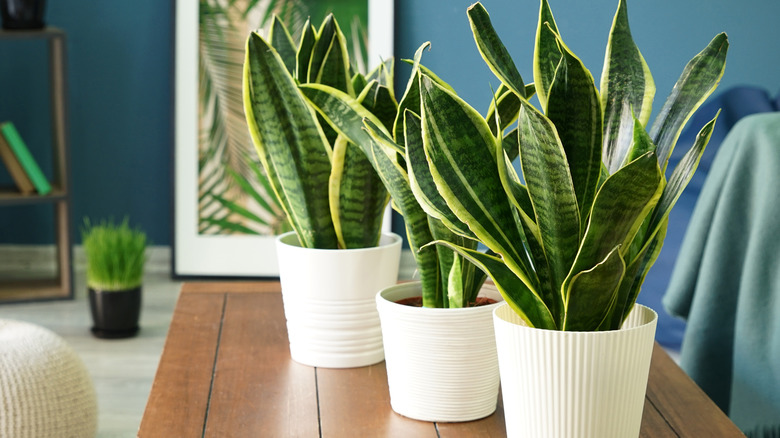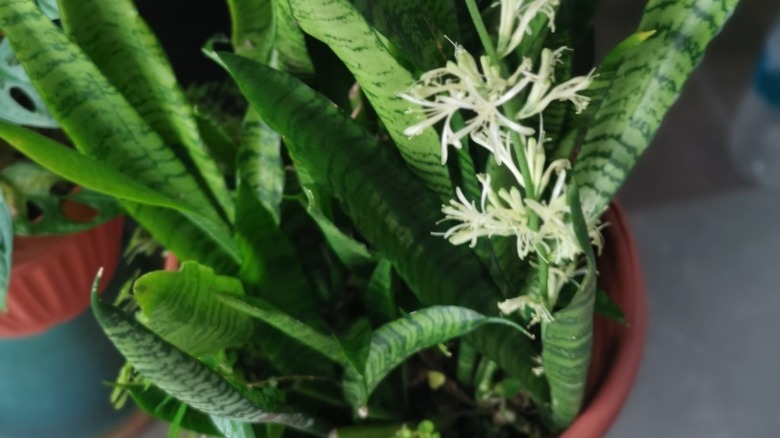Get Your Snake Plant To Show Off Impressive Blooms With These Tips
With its architectural, sword-like leaves and reputation for air purification, the snake plant (Dracaena trifasciata, formerly Sansevieria) has become a favorite among all plant enthusiasts. Yet, what truly captivates gardeners is its ability to flower, albeit rarely, about once a year in the spring, assuming it is genetically predisposed to do so. For instance, the 'Hahnii' variety rarely blooms, if ever. While there is no hard and fast rule, only mature snake plants generally flower when given the requisite conditions.
However, achieving these modest and fragrant blossoms requires a lot of work. While all plants need adequate sunlight to stimulate flowering, you need to strike the right balance between light exposure with stressful growth conditions for snake plants. Minimally watering the succulent and keeping its soil dry should generally do the trick. Also, allowing the plant to become a bit root-bound should transform the foliage plant into a blossoming marvel as its survival mechanism kicks in due to overcrowded roots.
Creating the ideal blooming environment
As flowering is an energy-intensive task, it's crucial that you move your snake plant from your home's shaded corners to sun-lit areas, such as east-facing window sills. While constantly subjecting your sword plant to indirect sunlight is ideal, a direct 3 to 4-hour-long sun exposure can work just as well. However, ensure the light and temperature transitions are slow and steady to avoid shocking the plant. For even better results, consider moving your snake plant outside full-time once temperatures are consistently above 50 degrees Fahrenheit.
Another way to induce blooming is to limit your watering sessions to occasions when the soil is fully dry. Generally, it will total around two sessions every month in the summer, followed by a lower frequency during cooler temperatures. Allowing the snake plant to remain root-bound, a state where roots become overcrowded and have no more room for growth can also induce flowering. Aim to switch out pots for bigger sizes every 5 to 7 years instead of the usual 3 to 4-year cycle. Also, make sure to fertilize your plant at a half-strength dosage every four to six weeks, as undernourished vegetation cannot bloom.
How a snake plant blooms
As is common among succulents, your snake plant's rhizome starts the blooming process by pushing a flower stalk through the plant's rosette. This flower spike can grow up to three feet tall and is lined with dozens of green bud clusters. These buds eventually open up in two to four weeks and bloom into pretty flowers with thin petals resembling small lilies or honeysuckles. However, some snake plants may grow flowers directly at their base instead of developing a flower stalk.
Usually, sword plants bloom at night and the flowers last around two to four weeks before producing berries and withering away. Their color palette varies greatly across varieties, with some, like Dracaena trifasciata, growing greenish-white flowers while others exhibit yellow or lavender blooms. After the blooms have faded, it is ideal to trim the flower spike down to the base, as the plant won't rebloom from the stalk. Instead, it'll send up a new stalk the next time it's ready to flower. This will also help redirect the plant's resources to growing foliage.


